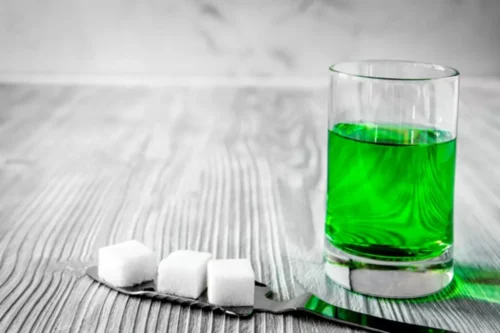
Studies have found that women get drunk faster and feel stronger effects than men. This is because they have smaller bodies and a higher proportion of fat than men, so their bodies need fewer drinks to induce insobriety. Several outstanding reviews of nitrate bioactivation and nitrate tolerance are recommended to the interested reader.14,15,31,32,46 It is clear that the nitrate tolerance story remains incomplete and unsolved.
Understanding the Role of Denial in Addiction
The sale of such drugs is conditional on truthful labeling and all the pertinent information needed for the drug’s safe and effective use. Prescription of a drug for unapproved use is not regulated but this does not exempt the prescriber from liability. reverse alcohol tolerance Scheduled drugs with higher abuse potential require increased caution when prescribing. Nearly all psychotropic drugs produce interoceptive stimulus cues that subjects/patients can learn to discriminate or detect (see Colpaert, 1986).

How Does Reverse Tolerance to Drugs and Alcohol Work?
Are you finding yourself drinking more and more to achieve the desired effect? If so, then you need to learn about alcohol tolerance and understand why this is happening. People who are experienced drug or alcohol users may exhibit behavioral tolerance. This form is often characterized by adjustments in appearance and behavior to conceal the extent of their substance abuse. Some long-term, heavy users are able to abruptly appear sober when they encounter a threat, such as that posed by law enforcement. These changes can contribute to the development of substance abuse disorders and the persistence of drug-seeking behavior, as the brain becomes increasingly sensitive to the rewarding effects of drugs.
Abstinence from alcohol
- Casa Palmera is a consistently successful program because with our holistic perspective, we analyze the physical, nutritional, environmental, emotional, social, spiritual and lifestyle values and challenges of each individual in recovery.
- The Recovery Village aims to improve the quality of life for people struggling with substance use or mental health disorder with fact-based content about the nature of behavioral health conditions, treatment options and their related outcomes.
- Fortunately, there are many steps you can take to prevent addiction from taking hold.
- These changes can occur at various receptor sites, where neurobiological adaptations take place in response to the presence of the abused drug.
- In another study, an intraperitoneal or intracerebroventricular injection of rimonabant blocked rapid alcohol tolerance in male rats in the tilt-plane test, whereas the CB1 receptor agonist WIN 55,212–2 facilitated it (Lemos et al., 2007).
As pubs and bars reopen across England, many are excited about the opportunity to enjoy a drink with friends and family. While some evidence suggests alcohol consumption increased during lockdown, other reports suggest that over one in three adults drank less – or stopped altogether. If you have signs of alcoholism or withdrawal symptoms that appear within hours of stopping or reducing your intake, you may need alcoholism treatment. If you drink heavily for too long, the body adjusts to the increasing presence of alcohol.
Reverse Tolerance
We conclude that studies of the neurobiology of alcohol tolerance should be revisited with modern conceptualizations of addiction and modern neurobiological tools. This may contribute to our understanding of AUD and uncover potential targets that can attenuate hazardous alcohol drinking. Another well-studied phenomenon related to cross-sensitization between drugs is cross-sensitization between stress experience and drug sensitivity. For example, repeated exposure to stress or injections of the stress hormone corticosterone results in both behavioral and neurochemical (increased dopamine release in the nucleus accumbens) sensitization to cocaine. Likewise, the acquisition of cocaine and amphetamine self-administration is enhanced in rats that previously experienced stress or repeated corticosterone injections.

Pharmacokinetic Factors
- Tolerance means you no longer respond to a drug in the same way you did when you first started taking it.
- Conventional Tregs, as characterized by CD4, CD25 and FoxP3 expression are critical in maintaining peripheral tolerance and thereby preventing the development of autoimmune disease [22,23].
- A down-regulation of receptors (i.e., fewer) or a reduction in receptor affinity or efficacy could produce a functional tolerance effect.
- Like every other drug or compound, ethanol is metabolized by the liver and stomach, and the metabolism of ethanol in individuals varies.
Alcohol tolerance that occurs in a single drinking session is called acute tolerance. A group of liver enzymes that get activated with chronic drinking causes this. Recovery in Tune offers integrated outpatient treatment programs that address substance abuse issues as well as the underlying causes of addiction and other mental health issues. We aim to provide all clients with the tools and support they need to achieve a full recovery and foster long-term sobriety and wellness. The Kindling Effect is hallmarked by either sensitization or desensitization to a substance.
- One key area involved in drug sensitization is the nucleus accumbens, a central component of the brain’s reward system.
- Functional or pharmacodynamic tolerance results from a decrease in the way CNS receptors respond to the drug after repeated drug exposures.
- While the other three types of tolerance focus on alcohol’s effects on the brain, metabolic tolerance refers instead to the rapid elimination of alcohol from the body following prolonged or heavy alcohol consumption.
- Sensitization can be due to changes in receptor density, receptor desensitization, or altered signaling pathways.
Psilocybin and other new treatment options for AUD

